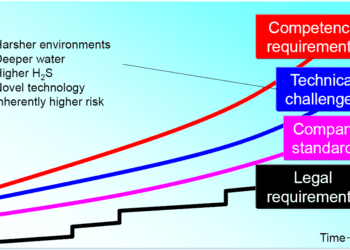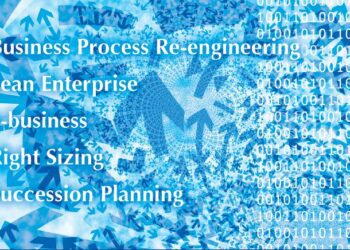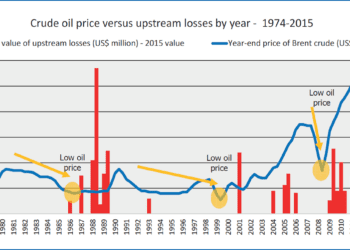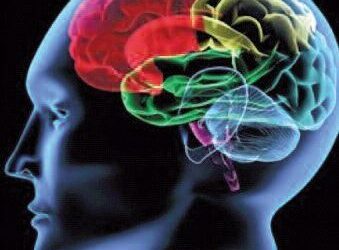Sharing Thoughts on Rail Safety
For Rail Safety Week, we thought it would be interesting to interview some of our team to discover their thoughts on safety and the role it plays on their day-to-day working lives. Three members of our team at varying stages of their Risktec career tell us about their experience and thoughts on safety.
Chintan Shah

What does safety mean to you?
As a railway engineer, safety is my top priority. It means making sure that everyone, including train drivers, track maintenance workers, and passengers, gets home safely every single day. This commitment to safety involves a comprehensive approach where we not only learn from our past mistakes but also actively implement necessary changes and improvements. By continuously updating our safety protocols and investing in advanced technologies, we strive to create a safer railway environment. It is essential that we foster a culture of safety, encouraging everyone to be vigilant and proactive in identifying potential hazards. Ultimately, safety in the railway industry is a collective effort that requires dedication, vigilance, and continuous improvement. By prioritizing safety in every aspect of our operations, we can achieve the goal of getting everyone home safely every day.
In your job role, what techniques do you use to manage safety?
In my role achieving safety in railway operations involves various techniques that align with either CENELEC standards, CSM-RA, and other relevant internal standards and regulatory requirements. Hazard Management involves systematically identifying, assessing, and mitigating hazards to prevent accidents. Fault Tree Analysis (FTA) is used to identify and analyse potential causes of system failures. Event Tree Analysis (ETA) explores possible outcomes following an initial event, helping in understanding the impact of failures. Risk Assessment evaluates potential risks to prioritize safety measures effectively. Software Assessment ensures that the software used in railway systems is reliable and free from errors that could lead to accidents. Reliability Block Diagrams (RBD) model the reliability of complex systems to predict and improve overall system reliability. These techniques, when integrated, provide a comprehensive approach to managing and enhancing railway safety, ensuring compliance with stringent standards, and fostering a safe operational environment for all.
What impact do you think Artificial Intelligence has / will have on safety?
Artificial Intelligence can and will gave have a significant impact on railway safety. It can enhance predictive maintenance by analysing data and predict when the equipment will fail thus enabling proactive maintenance and reducing the likelihood of accidents. It can provide real time monitoring of the tracks, trains, and other infrastructure by detecting defects or malfunctions. It will enhance automation in train operations thus reducing human error and improving overall safety. It will enable faster decision making by processing vast amount of data quickly and accurately thus enabling better traffic management, optimising schedules, and responding to emergency situations effectively. AI’s ability to analyse and act on data in real-time is a significant advancement that will contribute to the reduction of accidents and the enhancement of operational safety.
Clare Bermingham

What does safety mean to you?
Safety is avoiding death or life changing injury. Life is inherently risky as the weather, people and animals can be unpredictable. As a risk averse person, I don’t tend to partake in risky activities and I am vigilant on a day-to-day basis, I will avoid areas that are unsafe and service providers who do not have the reputation of maintaining equipment or training their staff to be safety aware. In certain circumstances as a patient or paying passenger, I am wholly reliant on others and expect my safety to be their top priority.
In your job role, what techniques do you use to manage safety?
As the office administrator, I look to encourage everyone to keep an eye out for potential hazards and report them promptly, it is my job to ensure these are resolved. We have regular maintenance visits arranged by the landlord and any issues identified are logged in a site book. I check this book fortnightly and monitor the progress of any issues. On a monthly basis I complete a report returned to the HSE Manager. Every 6 months a thorough inspection with a senior manager takes place. I also organise PAT testing and the training for others when required.
What impact do you think Artificial Intelligence has / will have on safety?
I do not know how AI currently impacts on Safety, most accidents are caused by human error so in theory it will be an improvement. I think we need to wait and see how we interact and whether the machines learn from us or teach us. I am aware that many accidents are caused as a result of personal bias and hopefully AI will be more objective.
Sam Waters

What does safety mean to you?
I work in the field of Human Factors which aims to ensure that products, workplaces or systems are designed to suit the users who are required to interact with them. For me, safety is ensuring that people are protected from harm by designing workplaces that avoid people working in ways that are uncomfortable, stressful or dangerous. Too often the end-user is blamed when things go wrong, can we flip that on its head? Organisations should continuously ask the question: what more can be done to design workplaces that help employees work in safer and more effective ways.
In your job role, what techniques do you use to manage safety?
A key technique in any Human Factors Specialist’s armoury is task analysis. Tasks analysis is a method used to break down tasks into smaller elements to help understand what each step of the task involves. As we better understand the task, we begin to identify areas that are susceptible to human error and therefore put in place mitigations to reduce risk to an acceptable level. A key stage that should feed into the development of a task analysis is speaking to end-users and observing them completing the task. They are the subject matter experts after all!
What impact do you think Artificial Intelligence has / will have on safety?
If effectively regulated, Artificial Intelligence has the potential to be gamechanger when it comes to managing safety. As AI becomes more advanced, I see it being able to better predict potential unsafe human behaviours. This could help work towards a more proportionate approach to managing human error, more targeted mitigations and therefore a reduction in the number of incidents. However, like a broken record: it is essential that we better understand the people who are designing the AI systems and the way that users will interact with AI to ensure that it is implemented safely and appropriately.







